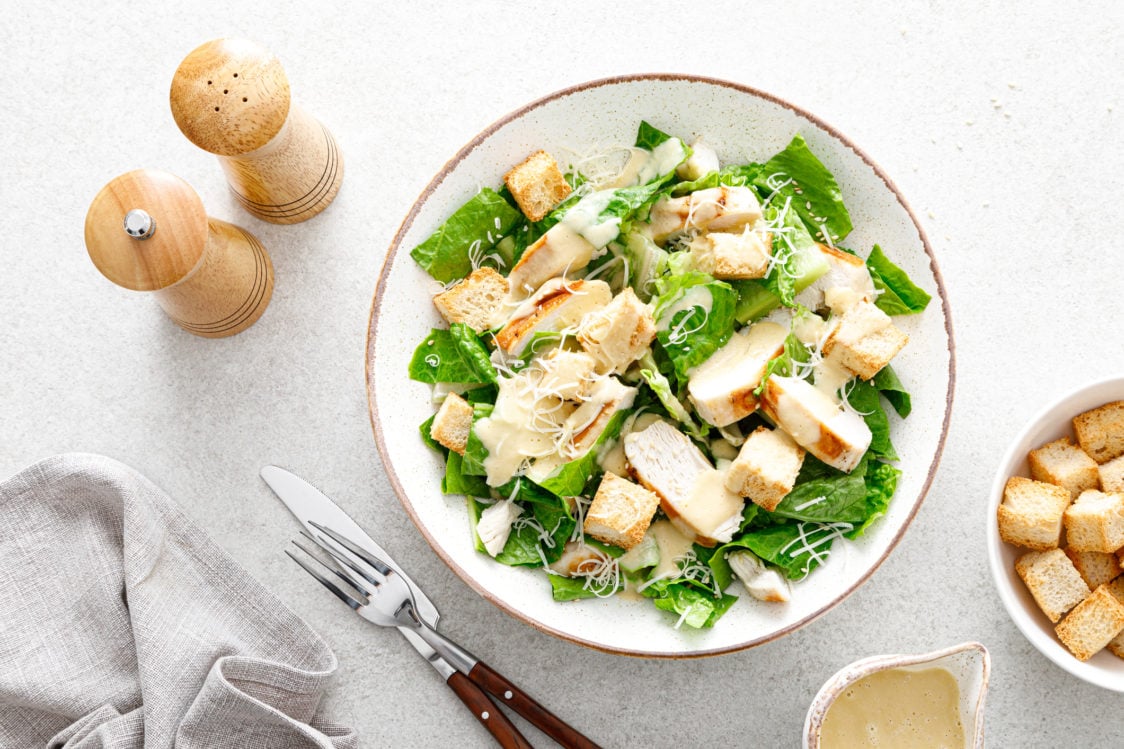Table of Contents
Maybe you’ve been in a situation where you think it would be nice to save some money. You could use it to buy something you’ve wanted for a long time, or to build up a financial reserve as an insurance policy for a rainy day. It’s probably no surprise that food is often the first thing people start saving on, and they may not even be in complete financial distress. So they may start buying lower quality foods or cutting meat, fruit, vegetables and the like out of their diet. However, this can also be to the detriment of their health. The body needs sufficient energy, vitamins, minerals and trace elements from nutritious food to function properly. So in today’s article, we’re going to show you some simple tips that can help you eat well and save money while you’re at it.
11 tips on how to eat quality and affordable food
Quality doesn’t have to mean expensive. Just shop smart and don’t mindlessly throw the first thing that comes to hand into your basket. In today’s article, we’ll show you some simple tips that can help anyone save money on food.
1. Don’t buy ready-made meals
While ready-made products may seem like a cheap option, this is far from the case. Sure, if you compare the price of a can of stew and 500 g of beef or pork, it makes sense that the ready-made product costs less. But now try to think about the portions. You can usually eat a can in one sitting, but you could make four portions of stew from just half a kilogram of meat. Does ready-made still seem like a cheaper option?
And so it is like this with other foods. Look at how much a frozen pizza costs from the store. Now compare that to how much flour, yeast and a little sugar, salt and oil would cost you to make your own homemade dough and pizza at home. For the money you save, you can top it with ham, cheese and other favourite goodies. For example, it’s common for a store-bought ham pizza to have only 12% ham. You don’t want to pay for that, do you? Not to mention that ready-made products have to contain more additives to last a long time. They often have a higher salt content. You can end up eating the whole 5g recommended daily amount in one ready-made meal. [4]
And it’s the same with prepared healthier meals. For a relatively high price, you can also find a variety of prepared vegetable salads in the shops, such as the popular Caesar. While it’s fine as a healthier alternative when you’re not in a hurry, take a closer look. Usually in the box you’ll only find a few lettuce leaves, dressing, a few croutons and some meat, which definitely doesn’t match the price. Plus, they can contain unnecessarily high calories because of the olive dressing. You should therefore buy the meat, vegetables and dressing separately and prepare the salad yourself at home. This way, you get a fresh, cheaper, better-tasting and more nutritionally balanced dish.

2. Buy seasonal fruits and vegetables
Fruit and vegetables are usually among the more expensive items in your shopping basket. But that doesn’t mean you should stop buying them in an effort to save money. You just have to choose wisely. Try comparing the prices of fruit in and out of season. They can vary in price significantly. So try to choose fruit and vegetables that are currently in season and you’ll be surprised at how much you’ll save. You can even freeze them during this period to build up a stock for during the off-season.
You can get an even lower price if you shop at local retailers rather than supermarkets, where fruit and vegetables are often imported. In season, you can also comb your garden or head to the woods to see what’s on offer for free. If you keep your eyes peeled, you can return home with a full cup of wild strawberries or blueberries. You can then use them to conjure up a delicious crumble pie, for example.
Sterilised or frozen forms can also be an affordable alternative. Fruits and vegetables for these purposes are harvested at the time of peak ripeness. As a result, it has a great taste at a relatively low price and is not depleted of its beneficial substances. This is a great way to save money and reap the benefits of these foods.
If you want to learn more about the positive effects of fruit on the body, you shouldn’t miss our article Fruit Myths and Facts: Does it Detoxify and Can It Be Eaten in the Afternoon and Evening for Weight Loss?

3. Prepare your own food and drinks
Grow your own fruit and vegetables
If you have a house with a garden, you can save a lot of money by producing your own. Not to mention the great feeling you get when you make a salad from your own vegetables or create a cake from home-grown strawberries. Of course, you can also grow some food in your apartment on your balcony. How about planting tomatoes, peppers, radishes, peas or strawberries? You’ll also appreciate herb pots for cooking. But it doesn’t stop there.
Make homemade yogurt
In addition to growing, you can save money by making your own yoghurt. All you need is one litre of semi-skimmed milk and yoghurt with live cultures. You heat the milk to just before boiling, then let it cool to about 40 °C and add a few spoons of yoghurt with live cultures. Fill jars with the mixture and place in a 40 °C oven for about eight hours. Then just chill the yoghurt and you’re done. If you want to save money on electricity, it is ideal to make at least two batches of yoghurt at once. Those who like different flavours can add fresh fruit or a Jammy Spread before eating. In addition to yoghurt, you can also make kombucha, kefir, fermented vegetables (pickles) and other fermented foods at home. Although it’s extra work, the result is really worth it.
Don’t buy mineral water
Mineral water is another rather popular item in shopping baskets. If you have drinking water running at home, there is no reason to buy drinks. Regular tap water is one of the best and also the cheapest ways to keep your body hydrated. Those who are used to sweet drinks can also add fruit and herbs to the water and let it infuse. And if you want a more interesting taste, add BCAAs and ice to create a refreshing drink.
In case you buy mineral water for the bubbles, get a machine that turns the water into soda instead. The initial investment will soon pay off, plus you’ll finally avoid buying mineral water in plastic. As well as saving money, you can also feel good about being kinder to the planet and not producing unnecessary waste.
You might be interested in these products:
4. Plan ahead
Before you go shopping, think about what you would like to cook during the coming week. Go through the recipes and buy all the ingredients you need. Similarly, think about the other meals your family eats at home. If you make a list ahead of time like this, you’ll know what to buy at the shop and you’ll be on the safe side. You won’t end up mindlessly throwing too many baked goods, fruits and fresh foods into the shopping basket that you don’t have time to eat and end up in the bin.
I will give you one more valuable piece of advice in connection with your shopping. Never go to the store hungry. If you do, you tend to buy a lot more stuff you don’t even need, and you’ll spend a lot more money than if you’d had a snack before going to the store. Not to mention, there will certainly be more goodies in your basket that you wouldn’t have bought otherwise.
If you’re looking for more practical tips on how to shop for groceries, you shouldn’t miss our article 7 Tips on How to Choose and Shop for Groceries.

5. Don’t waste food
Once you’ve put a particular food item in your basket, try to use as much of it as possible. The same goes for cooked meals when you don’t have any meat or side dishes left. Here are some simple tips on how to use them.
- Keep your vegetable trimmings and cuttings in one freezer bag and use them to make stock.
- Mix the leftover meat from lunch with cooked couscous, add vegetables and you have lunch for the next day.
- The leftover cooked side dish can form the basis for a salad the next day. It doesn’t matter if it’s rice, pasta, quinoa or potatoes. Add protein, vegetables, dressing and your next meal is ready.
- When you buy chicken, think of it as a whole. Don’t just use the breast, thighs and wings. You can use the trimmings and skeleton to conjure up a delicious broth full of essential micronutrients and collagen. The latter is important for joint health, but also for the appearance of your skin.
Every year, 1.3 billion tonnes of food are thrown away, representing approximately ⅓ of all production for human consumption. Fruit and vegetables account for the largest share of this. And perhaps not surprisingly, the industrialised world wastes more food than the developing world. [1]
For comparison:
- In Europe and North America, each person throws away an average of 95 – 115 kg of food per year.
- In sub-Saharan Africa and South-East Asia, each person throws away only 6 – 11 kg of food per year. [2]
As to the issue of waste, we must not forget to mention that you should look at the date on the food packaging.
- The use by date is commonly indicated on fresh food packaging. This is the latest date within which you can safely eat the food.
- The minimum shelf-life up to a certain date is indicated on non-perishable foods. However, you don’t have to worry about eating, for example, rice that is a few weeks past its expiry date but is packaged and looks fine.
Therefore, do not confuse these two pieces of information and do not throw away, for example, pasta and other non-perishable foods that are fine. You can also easily save money this way, as well as by storing food properly, which can extend the life of, for example, fruit and vegetables. You can read more about this in our article How to Store Food Properly to Make It Last As Long As Possible.
Try not to contribute to waste with your own behaviour. You will not only save the planet, but also your wallet. So make the most of all your food sources and remember that vegetables that are not the usual perfect shapes taste just as good as the perfect ones.
6. Shop for groceries when on sale, but with sense
Do you look for colourful signs in the shops inviting you to discounts or do you read the flyers with anticipation and circle which special products you will buy? It can certainly be a nice way to save money, but…
Don’t believe everything you see. If you’re used to buying a certain food, you’ll have an idea of how much it normally costs. So check the original price on sale offers. It may be that it has been artificially inflated and the final price is the same or higher than if the product was not on sale. Do not be fooled by these practices.
If you take leaflets from all the supermarkets in the area and buy various goods from other shops, it is a good idea to think about the additional costs. Especially if you drive. Does it make sense to go through the fuel for chicken breasts on sale that are discounted by 5%? Consider if you’re really saving money this way, or if you’d be better off buying everything in one place. But if you have shops within walking distance, there’s nothing stopping you from taking a longer walk to more supermarkets or cycling to do the rounds. With the weight of shopping, it can also be a decent workout.
Speaking of discounts and special prices, we’ve got even more tips for you to save money and help stores avoid waste. In different parts of the store, you’ll find shelves of goods that are nearing their expiry date. Often these products are at a significantly lower price. If you can use them by that date, there’s no reason to avoid them. It’s not just packaged foods that are marked like this. Similarly, you may find boxes of fruit and vegetables in shops that are not quite perfectly aesthetically proportioned, but otherwise perfectly fine. Again, these items tend to be a fraction of the price of their perfect-looking competitors. So don’t be afraid to reach for these pieces.

7. Eat at home
Sure, we understand that it’s tempting to visit restaurants, take pictures of goodies on social media and have others cook for you. There are occasions that wouldn’t go without a celebratory lunch. But is there really a need to go out to restaurants for lunch every day? For the price of lunch, you would be able to prepare the same dish yourself. The difference, however, is that at home you would create at least 2-3 portions, often more, for the same money. So consider whether it would be enough for you to go out for lunch with your colleagues just once a week and try meal prep on the other days?
How about trying a lunch challenge with your colleagues at work? Form a group of four people and take turns cooking from Monday to Thursday. This way, each of you will only make lunch once a week, and in larger quantities, which is also more economical. The advantage is that you won’t have to eat the same meal for four days, but will always enjoy a fresh dish. Plus you get inspiration for new recipes. Then on Friday you can all go together for a reward lunch menu and evaluate who is the best chef of the week.
But reducing the frequency of visits to restaurants doesn’t just apply to lunch. If you regularly go out for breakfast or dinner, try to calculate how much you’re spending on these meals. You might be surprised at how much it costs you to visit these venues. Then consider for yourself if it’s really necessary and if it would be a good idea to cut your restaurant visits by at least half.
8. Cook for several days
Many people are discouraged from boxing their food by the fact that they would have to eat the same food for three days. That’s not the case at all. You just have to be a little creative.
- With the meat you prepare, you can prepare a different side dish and vegetables every day. You will always create an original dish.
- The logic can also be the other way around. Cook a side dish (e.g. couscous, bulgur, rice, quinoa) for a few days and then just add different vegetables and vary the protein sources. One time you can have rice with pork, the second time with roasted tofu, and the third time you can whip up a rice salad with tuna and spinach. It’s up to you what you feel like.
This way you can make the meal prep much easier and easily whip up a varied menu. Always keep in mind that cooked food should stay in the fridge for a maximum of 3-4 days so that it doesn’t spoil. If you know you won’t be able to eat something in time, you don’t have to throw it away right away. You can freeze it for your lunch box. You’ll find that during hectic days, you’ll be glad to have a prepared lunch.

9. Don’t be tempted by the packaging
Have you noticed how popular products with the word protein are in stores? You can even see it on baked goods or various spreads, which often have a significantly higher price because of it. But does it make sense to buy them? Before you reach for such a product, look at the ingredients to make sure how much protein it really contains. The labels ‘protein’ or ‘source of protein’ may already be present when at least 12.5% of the total energy value is protein, which is not a very high amount. Many foods that do not carry the popular protein label exceed this threshold. [3]
Use common sense when choosing food and think – does it really make sense to pay a third more for a product that says protein and contains, for example, 5g more protein per 100g than its “regular” version? Products with FIT, in shape and so on can be similarly tempting. These are just empty words that often have no meaningful value about the product. Don’t fall for these practices and read the ingredients yourself before putting something in your basket. Your wallet will thank you.

10. Give other brands a chance
Do you have a favourite brand of yogurt that you’ve seen on TV and have been buying it ever since? If you want to save some money, it might be time to give cheaper alternatives a chance. Not every company has the budget to pay huge amounts of money for TV advertising on a regular basis. But that doesn’t necessarily mean it has inferior products. Maybe it puts the money it saves into improving production technology at the expense of advertising.
Next time you go shopping, try to look for the same product in other brands. They can be substantially different in price, even without differences in quality. In supermarkets, for example, a home brand product may be a cheaper alternative. So give it a chance, you might find a new favourite, and you might even save money.
11. Don’t be afraid to experiment in the kitchen
Have you found a recipe you’d like to try, but you don’t have all the ingredients? Don’t be afraid to improvise and use what you have. Often you can at least partially substitute different flours, sweeteners, fruits or ingredients for sauces in recipes. Similarly, for savoury dishes, you don’t always have to use the most expensive Italian ham, meat or cheese. Go for ingredients that you like and are affordable for you. And who knows, you might discover new recipes that end up tasting better than the original.
Speaking of experimenting, we mustn’t forget to mention another money-saving tip for meat lovers. If you can’t imagine a day without it, joining the Meatless Mondays campaign can be a great challenge. For example, you can use a variety of legumes as a source of protein, which should be a regular part of your diet, or other plant sources. You can also prepare sweet dishes in the same way. If you add protein to them, you don’t have to worry about a protein deficiency.
You can also prepare potato chips at home or bake homemade buns or other goodies. This will save you money, plus you’ll gain new cooking skills that your loved ones will appreciate.
Looking for tips on healthy treats? Then you should not miss our fitness recipes.

What should you remember?
As you can see, quality food doesn’t have to be expensive. You just need to think when you buy. When choosing your ingredients, take into account the fact that you’ll be using them to prepare food for several days. You can’t compare the price of one portion of processed food to a kilo of meat, which will ultimately make a lot more food. Similarly, it’s good to choose seasonal produce and make your own food and drinks at home. This will give you new skills that you can use later in life.
Don’t be afraid to shop on sale either. But always consider whether prices are really as good as they look and don’t get caught out. Above all, always remember to buy only the amount you will actually use in your household to minimize waste. If you can incorporate our simple tips into your life, you’ll see that you’ll be able to save some money on food and save up to buy something you may have wanted for a long time.
Do you have someone among your friends who spend a lot of money on food or wastes unnecessarily? Share this article with them.
[1] Min Zhang et al. – Global trends and future prospects of food waste research: a bibliometric analysis – https://www.researchgate.net/publication/326448573_Global_trends_and_future_prospects_of_food_waste_research_a_bibliometric_analysis
[2] Global food losses and food waste – https://www.fao.org/fileadmin/user_upload/suistainability/pdf/Global_Food_Losses_and_Food_Waste.pdf
[3] Commission Regulation (EU) No 432/2012 of 16 May 2012 establishing a list of permitted health claims made on foods, other than those referring to the reduction of disease risk and to children’s development and health – http://data.europa.eu/eli/reg/2012/432/oj
[4] Salt reduction – https://www.who.int/news-room/fact-sheets/detail/salt-reduction

